How can I save money on food while traveling?
I see this question frequently. It’s a great one really. There are many ways to reduce what you spend on food while traveling, and saving money on food translates to being able to save money for other activities, or making it more affordable to take a trip. 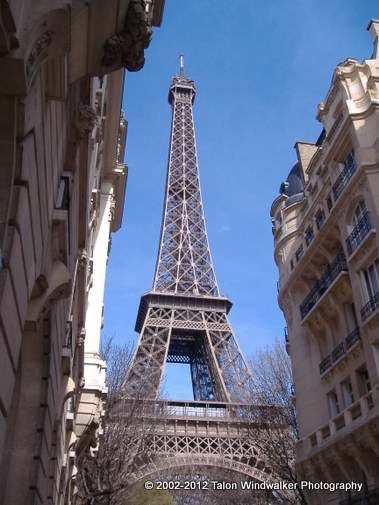 Road Trips When taking a road trip, getting snacks at gas stations and convenience stores can quickly add up to a lot of money. I like to go to stores like Costco where you can buy a good-sized variety pack rather inexpensively. These are great because there is usually a mix of textures and flavors to appease those car-bound cravings—sweet and salty, crunchy, chocolately, etc. If you like jerky, you can usually get two bags for less than what a few ounces cost in a corner store. The same goes for drinks. Cases of beverages are much cheaper at these warehouse-type stores than buying individual bottles and cans while on the road. Bring an ice chest, and you’ll have cold drinks for hours. You can buy more ice as needed. Tip: Cold air flows downward, so pack the ice on top of the items whenever possible. They’ll stay colder longer, and the ice will last longer as well. Fast food can be very unhealthy even though it’s extremely convenient. You can work around this a bit by going to shops like Subway. Buying a foot-long sandwich costs less than two 6-inch subs. We’ll typically get a foot long for each person, eat half, and then eat the other half later in the day at another meal. If you buy the daily special, you can often walk away with two meals for under $4. Of course, if you brought along an ice chest, you can save even more money by buying lunch meat, bread, etc., and making your own sandwiches.
Road Trips When taking a road trip, getting snacks at gas stations and convenience stores can quickly add up to a lot of money. I like to go to stores like Costco where you can buy a good-sized variety pack rather inexpensively. These are great because there is usually a mix of textures and flavors to appease those car-bound cravings—sweet and salty, crunchy, chocolately, etc. If you like jerky, you can usually get two bags for less than what a few ounces cost in a corner store. The same goes for drinks. Cases of beverages are much cheaper at these warehouse-type stores than buying individual bottles and cans while on the road. Bring an ice chest, and you’ll have cold drinks for hours. You can buy more ice as needed. Tip: Cold air flows downward, so pack the ice on top of the items whenever possible. They’ll stay colder longer, and the ice will last longer as well. Fast food can be very unhealthy even though it’s extremely convenient. You can work around this a bit by going to shops like Subway. Buying a foot-long sandwich costs less than two 6-inch subs. We’ll typically get a foot long for each person, eat half, and then eat the other half later in the day at another meal. If you buy the daily special, you can often walk away with two meals for under $4. Of course, if you brought along an ice chest, you can save even more money by buying lunch meat, bread, etc., and making your own sandwiches. 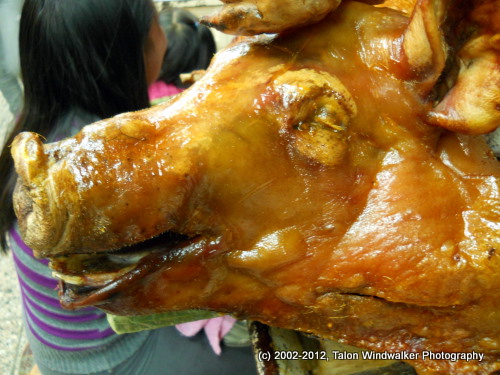 Planes, Trains, and Buses A lot of the same principles for road trips apply here. Of course, with plane travel you may be restricted on what drinks you can bring past security, but you can bring other snacks for the flight. If I’m in an area with potable water, I’ll usually bring an empty water bottle in my carry-on and then fill it at the water fountain once I’m through security. Otherwise I will occasionally bring a filtered water bottle that I can fill up with tap water so I don’t have to spend four times the normal rate for bottled water. Tip: If you bring fruits, veggies, and/or meat products, make sure you consume those on the plane, et al., since those products may not be allowed to cross the border.
Planes, Trains, and Buses A lot of the same principles for road trips apply here. Of course, with plane travel you may be restricted on what drinks you can bring past security, but you can bring other snacks for the flight. If I’m in an area with potable water, I’ll usually bring an empty water bottle in my carry-on and then fill it at the water fountain once I’m through security. Otherwise I will occasionally bring a filtered water bottle that I can fill up with tap water so I don’t have to spend four times the normal rate for bottled water. Tip: If you bring fruits, veggies, and/or meat products, make sure you consume those on the plane, et al., since those products may not be allowed to cross the border. 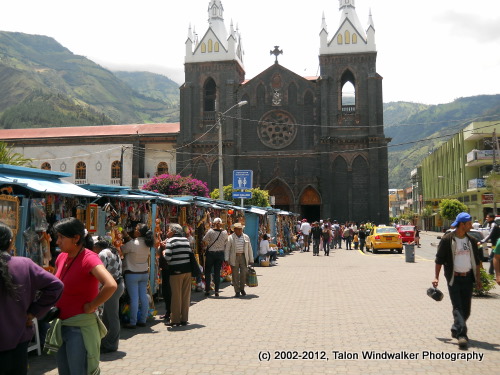 Around TownYou’ve arrived at your destination, but you still want to save money. There are lots of ways to accomplish that:
Around TownYou’ve arrived at your destination, but you still want to save money. There are lots of ways to accomplish that:
- Eat “street food.” Sidewalk vendors usually sell food for much cheaper. You won’t have a sit-down four-course dinner, but the food often can rival that found in restaurants. In Ecuador, we bought four skewers with tasty chicken and veggies (basically kebabs) for $2, and they were some of the best food we had in that country. They tend to be very basic meals which is great for finicky children.
- Be careful with cafes that offer outdoor seating. Sometimes you pay more money to sit outside.
- Open-air markets usually have vendors selling many types of foods. They’ll be fresher, tastier, and cheaper than most restaurants. The markets tend to have more stringent health requirements than even restaurants, and because they have more facilities available to them than the street vendors, so the food is even safer. Markets are one of the best ways to mingle with locals and get a feel for the typical culture. I’m excited any time I find one of these markets, and I frequent them even if I’m not looking to buy something. They’re always a cool experience, and even Tigger will request to go to them just for fun.
- Avoid tourist haunts. The food is usually not as good and is almost always way overpriced. You also won’t get as authentic of a meal. If you’re like me, part of the fun of travel is trying out different foods and seeing how locals live. You won’t find that in the restaurants next to the cruise terminal. I ask locals, hostel staff, etc., where they go for a meal, or where they would take visiting friends, and I specifically tell them I don’t want to go where tourists eat. If you’re in a touristy area, usually you can get out of the typical traps by walking only a few blocks away. Or grab the cheap bus, get off at a random destination and just walk around. Sometimes those are my best finds.
- Check out the grocery stores. They often have prepared foods that are flavorful and cheaper than restaurants. For example, in Cozumel a local tourist/expat trap is charging $12 for 2 pieces of fried chicken with 2 sides. At the grocery store two blocks from our home, we picked up 8 pieces of incredibly good fried chicken with two sides for $5.57. Almost $7 cheaper! At the corner polleria I can pick up a whole roasted chicken, corn tortillas, rice, spaghetti, cooked onions, and salsa for $6.77. At a nontourist taco place, I can get 6 pastor tacos (pork cooked on a giant skewer and then cut into thin slices) for $3.60. However, at the grocery store I can buy 0.5 kg of shredded pork and a bunch of freshly made tortillas, still warm from the oven, for $4.60 which will easily turn into at least 3 different meals for us, which is a significant savings. Don’t underestimate what you can find in grocery stores.
- Like mixed drinks? Buy the bottles and mixer at the store and make them yourself. In the tourist zone a rum and Coke can cost $4.50 or more for an 8-ounce glass (which will be packed with ice). A whole bottle of rum costs less than what you spend for 2 cuba libres, and you’ll get a LOT more drinks than that out of it.
- Find the hole-in-the-wall places. They may look scary, but they’re typically just as safe as any of the other restaurants. They’re also cheaper, and the food can often be much better. These are usually run by families, and Mama is usually in the kitchen (or she’s taught the cooks) making food from recipes that have been passed down for generations. I’ve only had food-related issues three times, and two of those were from restaurants in the States. The other was at a place I had been warned against going, but I was extremely hungry and in a major rush so took my chances—and paid for it.
- Look for places offering a fixed menu or plate of the day. These are usually 2- to 3-course meals that include a drink and are extremely inexpensive. You can truly save a lot of money this way. We have commonly found wonderful meals for $2 or less per person in Central and South America, whereas ordering a la carte or off the menu was three times that price.
- Combine the above with staying at an accommodation that either provides a free breakfast or has a kitchen where you can prepare your own, and you’ll save enough money during the day to splurge. While in Paris I would stop at a bakery in the morning. I’d get something like a quiche for breakfast and pick up a ready-made sandwich to take with me for lunch. I’d pay about $4 and get two meals. Selecting restaurants that had a fixed price menu meant I could get a fabulous meal for under $9, and that often included a glass of wine. Spending less than $13 a day for meals in Paris? WIN! Doing this I ended up saving enough money that I was able to treat myself to the most amazing meal of my life on my final night and buy an overpriced small painting that I fell in love with in Montmartre.
Travel doesn’t have to be expensive, and you don’t have to deny yourself some special treats to save money. What are you favorite things to try when traveling?

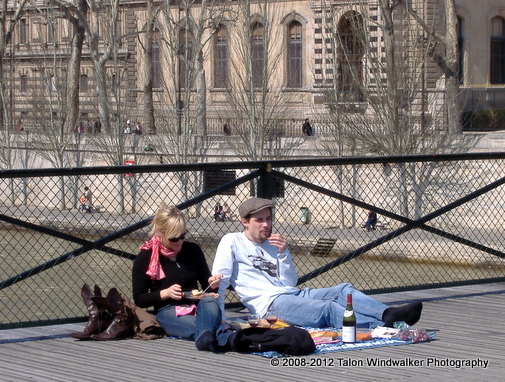
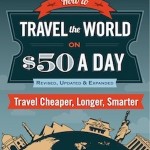

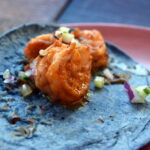


January 27, 2013
Thanks for the great tips! I am looking forward to more! I mentioned I am working on a trip staying in Italy and Portugal for a week, But travel from Italy thru France and Spain before staying a week in Portugal. I am very adventurous and plan to stay in hostels along the way. My husband is NOT as adventurous and has his reservations about staying in hostels. Any travel tips you can provide would be most helpful. I’m planning this trip next year in the early fall. Thanks Talon!
January 27, 2013
Sounds like fun! I’d recommend you also check into AirBNB.com. When paying for 2 beds, I’ve often found renting a room or an apt is cheaper than even hostels, often by quite a bit. And it’s more comfortable as well. I’ll be doing a bunch of France posts for you soon. 🙂
August 8, 2012
I try to save by having lots of picnics with food I pick up at markets but for me one of the great things about travelling is the food so I don’t mind splurging when I see something appetising.
August 9, 2012
I usually try to do at least 2 meals a day that are pretty cheap so that once a day I can really do something different or special. I love picnics as well!
August 2, 2012
Eating street/market food is great but as a veggie I’m not always sure of the ingredients. Asking for a vegetarian option can sometimes start a nice conversation. Sometimes it just prompts a blank and/or pitying stare. So I tend to hit the grocery store. That way I know exactly what I’m getting and – as you pointed out – it’s always a bargain.
August 2, 2012
Being a vegetarian definitely adds another dimension.
August 1, 2012
I still can’t comprehend a two course meal for less than $2 in Ecuador!
Even in Thailand, a hit of street food was at least $1-2 and you’d need a few of them to constitute a two course meal!
August 1, 2012
It’s pretty amazing. You won’t walk away stuff, but we never felt hungry either.